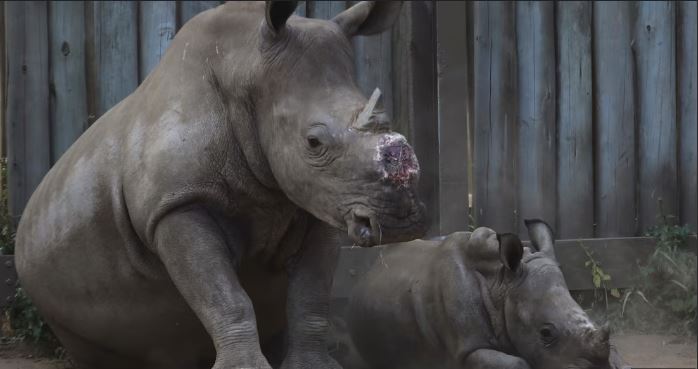CAPE TOWN, South Africa — In a controversial yet increasingly common conservation practice, rhinos are having their horns removed — not out of cruelty, but as a desperate attempt to save them from being slaughtered by poachers. And now, scientists say it works.
A new, long-awaited study published in the journal Science reveals that cutting off rhino horns leads to a dramatic 78% drop in poaching. The research, carried out over seven years in and around Kruger National Park, home to one-quarter of the world’s rhino population, offers compelling evidence that this method could be a key tool in the fight to protect one of Africa’s most iconic animals.

Poaching Crisis
For decades, rhinos have been targeted for their horns — prized in illegal markets across parts of Asia, where they’re used in traditional medicine or sold as luxury items. In response, conservationists began dehorning sedated rhinos using chainsaws — a procedure that sounds brutal but is done carefully, with the animal blindfolded and protected to minimize stress.
Rhino horns grow back, so the process must be repeated every one to two years. Until now, there was little hard data to confirm whether it made a real difference.
What the Study Found
Led by biodiversity scientist Tim Kuiper from Nelson Mandela University, the study looked at 11 wildlife reserves over a seven-year period. Eight of those reserves regularly dehorned their rhinos, while three did not. The result: a consistent and significant drop in poaching rates in dehorned populations.
“It is a big part of what a rhino is, having a horn,” Kuiper said. “But it’s very effective. There’s no doubt it saved hundreds of rhinos’ lives.”
In total, over 2,000 rhinos were dehorned during the study. And while the practice remains controversial, Kuiper and his team believe it’s a crucial, if temporary, way to prevent extinction.
The Debate Over Dehorning
Not everyone agrees with the method. Animal welfare groups and even some conservationists worry about the long-term effects. Rhinos use their horns to defend themselves, forage, and establish dominance, particularly among black rhinos.
But so far, researchers have found no significant impact on breeding or mortality rates. In fact, rhinos may adapt their behavior, such as reducing the size of their territory — a possible side effect, but not one that appears to threaten their survival.
“The benefits of dehorning far outweigh any ecological cost we’re aware of today,” said rhino researcher Vanessa Duthe, who was not involved in the study.
She added that the procedure now takes about 10 minutes, causes minimal distress, and provides a chance to microchip the rhinos and collect health data.
Not a Silver Bullet
Still, experts caution that dehorning is not a standalone solution. Poaching remains rampant — with over 400 rhinos killed each year in South Africa alone. More support is needed for game rangers, better law enforcement, and coordinated global action to reduce demand for rhino horn.
The study was a joint effort involving three South African universities, Oxford University, game reserve managers, and organizations like the World Wildlife Fund and Rhino Recovery Fund.
As the battle to save rhinos continues, one thing is clearer than ever: sometimes, the most difficult decisions are the ones that make the biggest difference.



